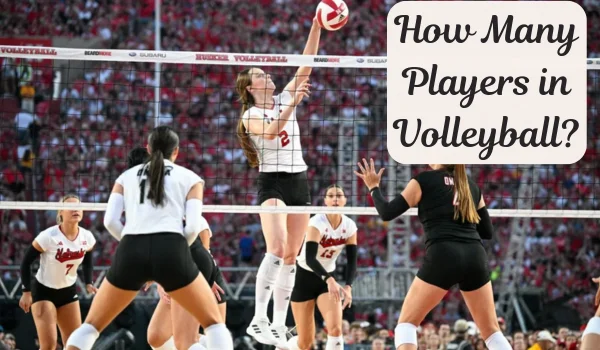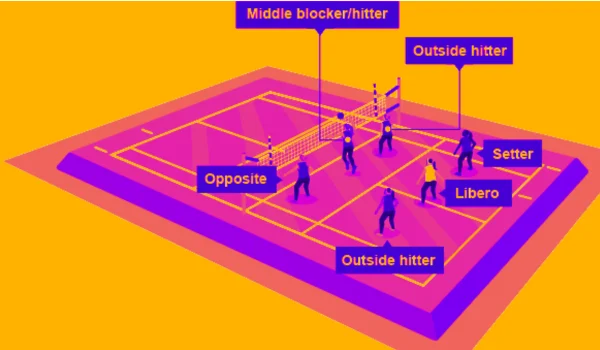Volleyball is one of the most popular and widely played sports globally, known for its fast-paced action, teamwork, and strategic gameplay. Whether played indoors, on the beach, or even as a recreational backyard game, volleyball follows a specific set of rules that determine the number of players on a team and on the court at any given time and this article contains the detail information on how many players are there in a volleyball team.
If you are new to the sport or simply curious, you might wonder: how many players are in volleyball? The answer depends on the type of volleyball being played—indoor, beach, or variations like sitting volleyball. Let’s break down the details.
Standard Indoor Volleyball: Six Players Per Team

In indoor volleyball, which is the format played in major international competitions such as the Olympics, FIVB World Championships, and professional leagues, each team consists of six players on the court at any given time. The team is arranged in two rows:
- Front row: Three players positioned near the net, mainly responsible for blocking, attacking, and setting.
- Back row: Three players positioned behind the attack line, focusing on defense, passing, and serving.
A standard indoor volleyball team usually has a total of 12 to 14 players, including substitutes. Coaches can rotate players based on strategy, injury, or fatigue. Key positions include:
- Outside hitters (left-side attackers)
- Opposite hitters (right-side attackers)
- Middle blockers
- Setter
- Libero (specialized defensive player)
- Defensive specialists
Each player has a crucial role in ensuring smooth coordination and execution of plays.
Beach Volleyball: Two Players Per Team
Unlike indoor volleyball, beach volleyball is played with only two players per team, with no substitutes. This means each player must be highly versatile, capable of handling all aspects of the game, including serving, passing, setting, attacking, blocking, and defending.
Beach volleyball is played on a smaller sand court (16m x 8m compared to the 18m x 9m indoor court), and players switch positions frequently during rallies to adjust to their opponents’ strategies.
Sitting Volleyball: Six Players Per Team
Sitting volleyball, a version of the sport adapted for athletes with disabilities, follows similar rules to indoor volleyball but with a key difference: players must remain seated on the court while playing. Each team has six players on the court, and they must keep contact with the ground while executing plays.
Sitting volleyball is an intense and competitive Paralympic sport, requiring strong communication and quick reflexes despite the limited movement.
Recreational and Modified Volleyball Variations
Beyond the professional formats, volleyball is often played in informal and recreational settings with modified team sizes:
- 4v4 Volleyball: Common in amateur leagues or casual games, four players per team provide a balance between teamwork and individual skill.
- 3v3 Volleyball: Played on a smaller court, this version demands quick movement and greater individual responsibility.
- 9v9 Volleyball: Popular in certain Asian countries, especially in Japan, this variation involves nine players on each side, allowing for extended rallies and strategic plays.
Substitutions and Rotations in Volleyball
In indoor volleyball, substitutions play a crucial role. The FIVB (Fédération Internationale de Volleyball) allows a team to make up to six substitutions per set, with specific rules on how players can enter and exit the game.
A key element of indoor volleyball is the rotation system, where players rotate clockwise after each side-out (when a team wins back the serve). This ensures that every player takes turns playing in different positions, except for the libero, who has a specialized role.
Conclusion
The number of players in volleyball varies depending on the format:
- Indoor volleyball: Six players per team on the court.
- Beach volleyball: Two players per team.
- Sitting volleyball: Six players per team.
- Other variations: 3v3, 4v4, and 9v9 formats exist for different levels of play.
Regardless of the format, volleyball remains an exciting and dynamic sport that emphasizes teamwork, strategy, and skill. Whether you play with two players or six, the essence of the game remains the same: coordination, communication, and the drive to win points through precision and power.




